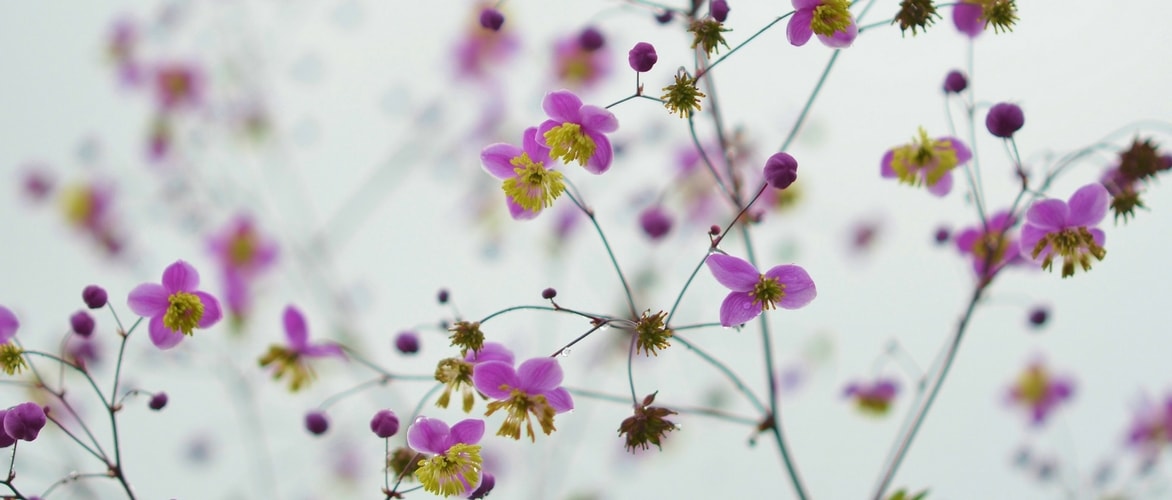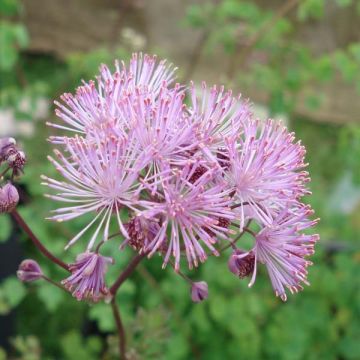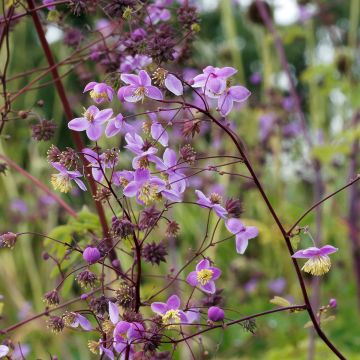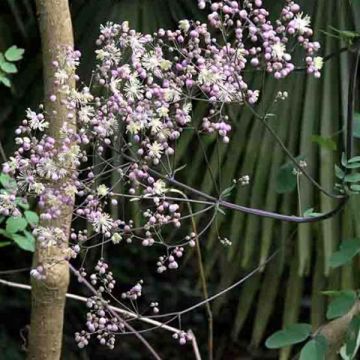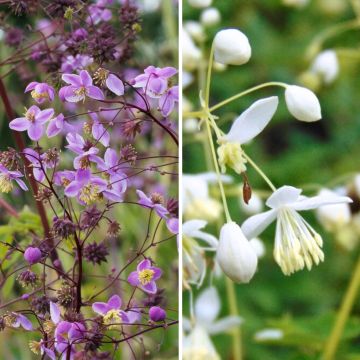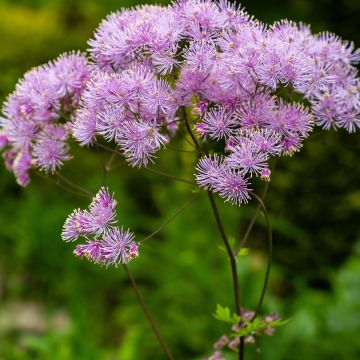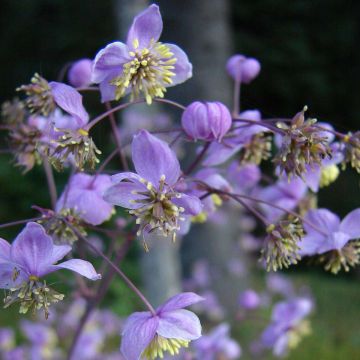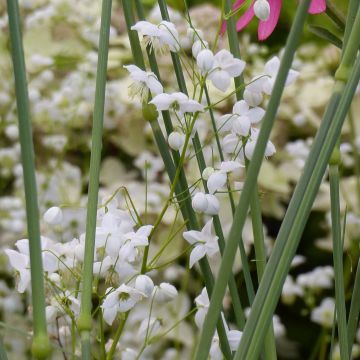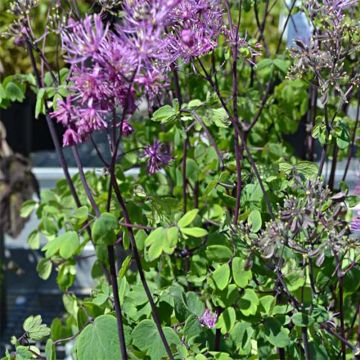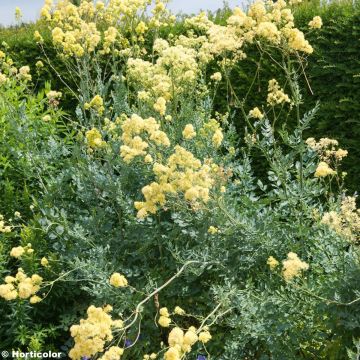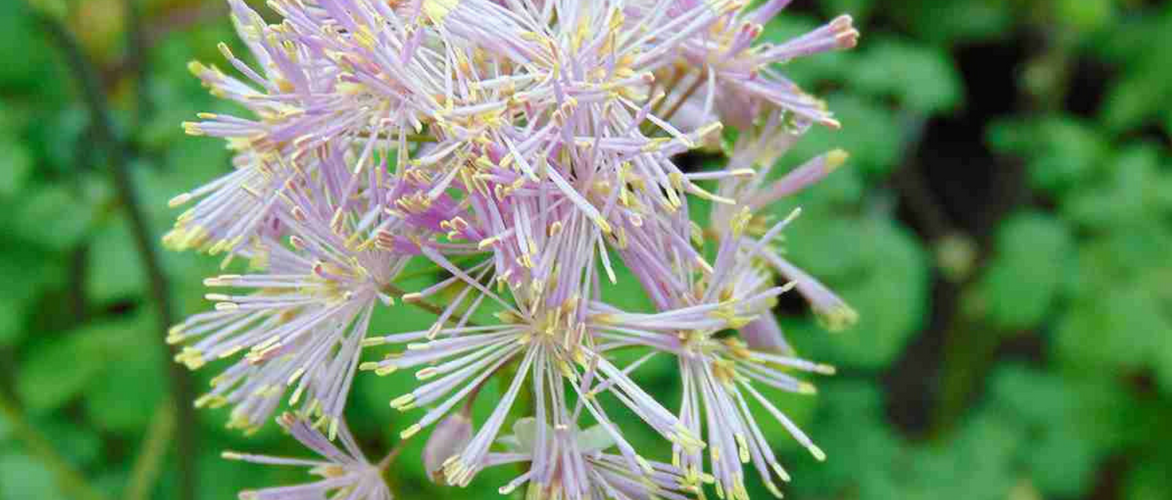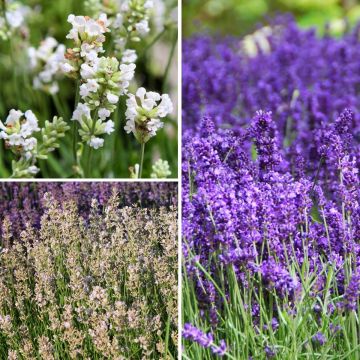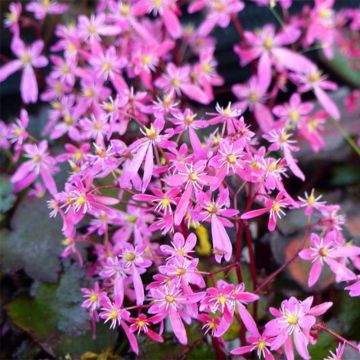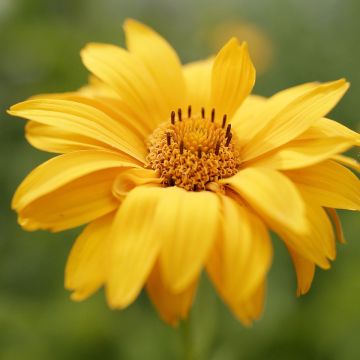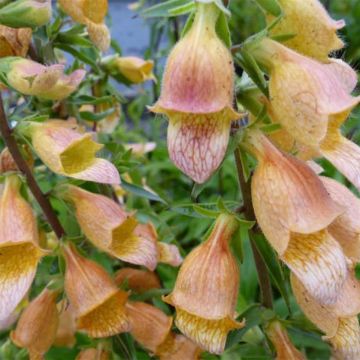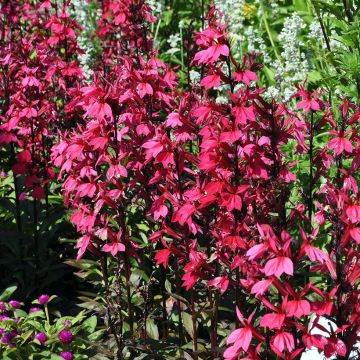

Thalictrum delavayi - Meadow-rue
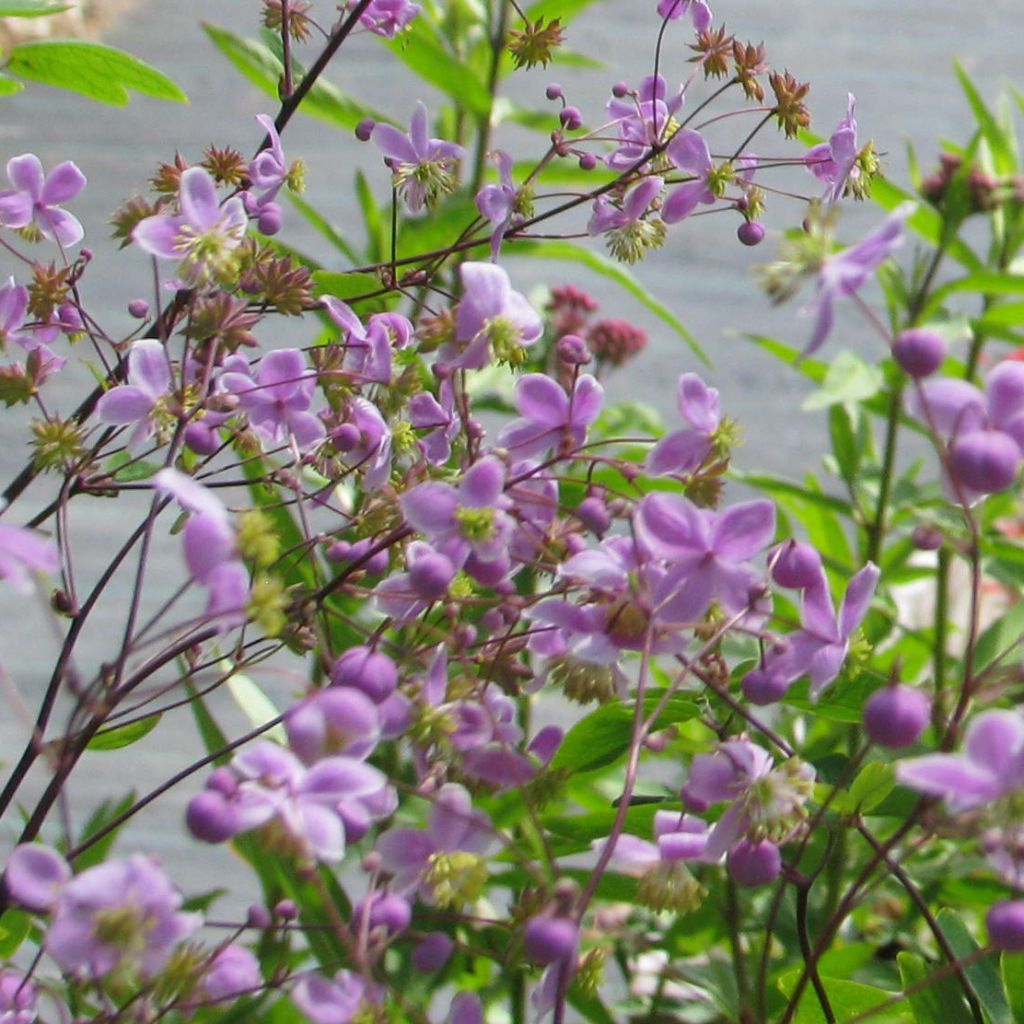

Thalictrum delavayi - Meadow-rue
Thalictrum delavayi - Meadow-rue
Thalictrum delavayi
Chinese Meadow Rue
Well received, well planted, well established.
Pascale, 23/10/2025
Special offer!
Receive a €20 voucher for any order over €90 (excluding delivery costs, credit notes, and plastic-free options)!
1- Add your favorite plants to your cart.
2- Once you have reached €90, confirm your order (you can even choose the delivery date!).
3- As soon as your order is shipped, you will receive an email containing your voucher code, valid for 3 months (90 days).
Your voucher is unique and can only be used once, for any order with a minimum value of €20, excluding delivery costs.
Can be combined with other current offers, non-divisible and non-refundable.
Home or relay delivery (depending on size and destination)
Schedule delivery date,
and select date in basket
This plant carries a 12 months recovery warranty
More information
We guarantee the quality of our plants for a full growing cycle, and will replace at our expense any plant that fails to recover under normal climatic and planting conditions.


Would this plant suit my garden?
Set up your Plantfit profile →
Description
Thalictrum delavayi is an exquisite herbaceous perennial plant with spectacular dimensions and a graceful, light, and elegant silhouette, reminiscent of Gypsophila. With an airy habit, its tall, upright, and branching stems bear delicate green foliage with bluish reflections. In summer, it produces drooping clusters of small mauve flowers with visible butter-yellow stamens.
Thalictrum delavayi, also known as Thalictrum dipterocarpum, is a perennial plant native to the Himalayan region of Asia, from eastern Tibet to western China. It belongs to the Ranunculaceae family. It is found in the wild at high altitudes, in forests, scrublands, and grassy slopes. This meadow rue is an herbaceous perennial with an upright and erect habit, forming a bushy clump, from which flexible stems rise, shaded with dark purple, reaching a height of 1.5 to 2m (5 to 7ft), with a width of 60cm (24in). Its slightly bluish and glaucous green deciduous foliage is finely cut and very light, reminiscent of certain Capillaries. It is composed of pinnate or ternate leaves measuring 15 to 35cm (6 to 14in) long, with entire or trilobed leaflets. From June to August, large loose panicles appear. They are well-branched, terminal and axillary, formed by small star-shaped flowers with four lilac sepals, enhanced by prominent creamy-yellow stamens. They do not like competition from nearby roots so respect a planting distance of 40cm (16in) around its base. Meadow rue is quite slow to establish, but will become increasingly beautiful over time. This species received the Award of Garden Merit from the Royal Horticultural Society in 1993.
This meadow rue is the ideal plant to brighten and flower the moist and shaded areas of the garden. With its size, delicate and elegant bluish-green foliage, its airy appearance, and the pretty pastel colours of its inflorescences, it will be perfect to add height and lightness to borders. It will have a beautiful effect in contrast with less delicate perennials, as well as along the edge of shrub borders. It will naturally find its place alongside hostas, hydrangeas, shrub or climbing roses, fuchsias, Japanese anemones, aconites, astilbes, campanulas, alder buckthorn, snowberries, ferns, hellebores, foxgloves, grasses, perennial geraniums, elderberry, and Sacred Bamboo.
The origin of the word Thalictrum is derived from the Greek "thallein", meaning to become green, and "ictar", meaning quickly, in reference to its rapid growth.
Its specific name delavayi was given in honour of Father Jean Marie Delavay (1834-1895), a Christian missionary, who collected one of the largest botanical collections in the Yunnan province of China on behalf of the National Museum of Natural History in Paris.
Thalictrum delavayi - Meadow-rue in pictures
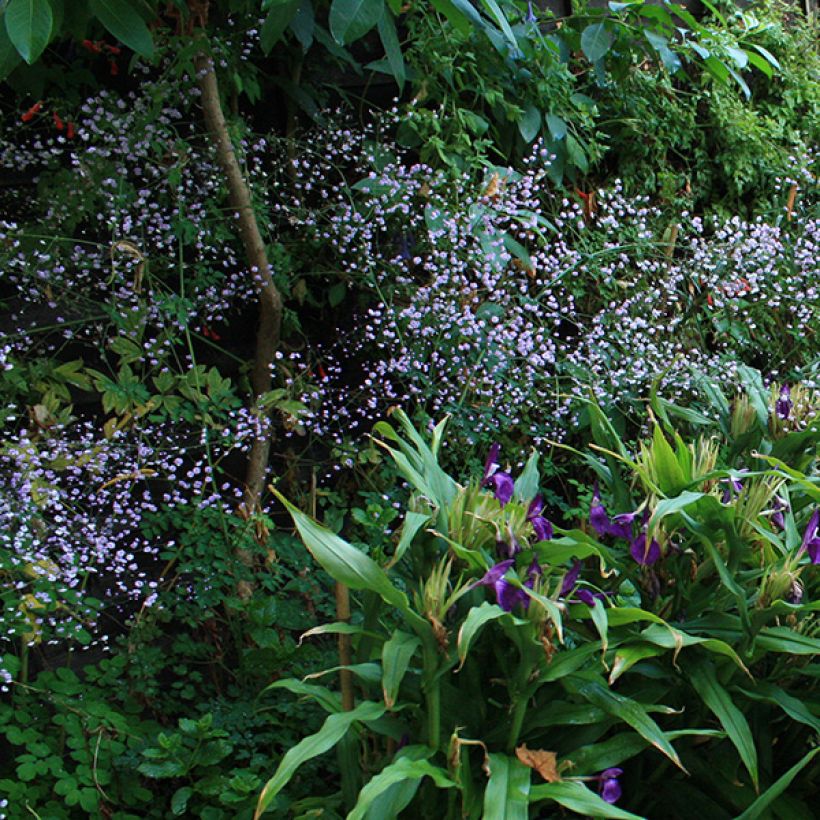

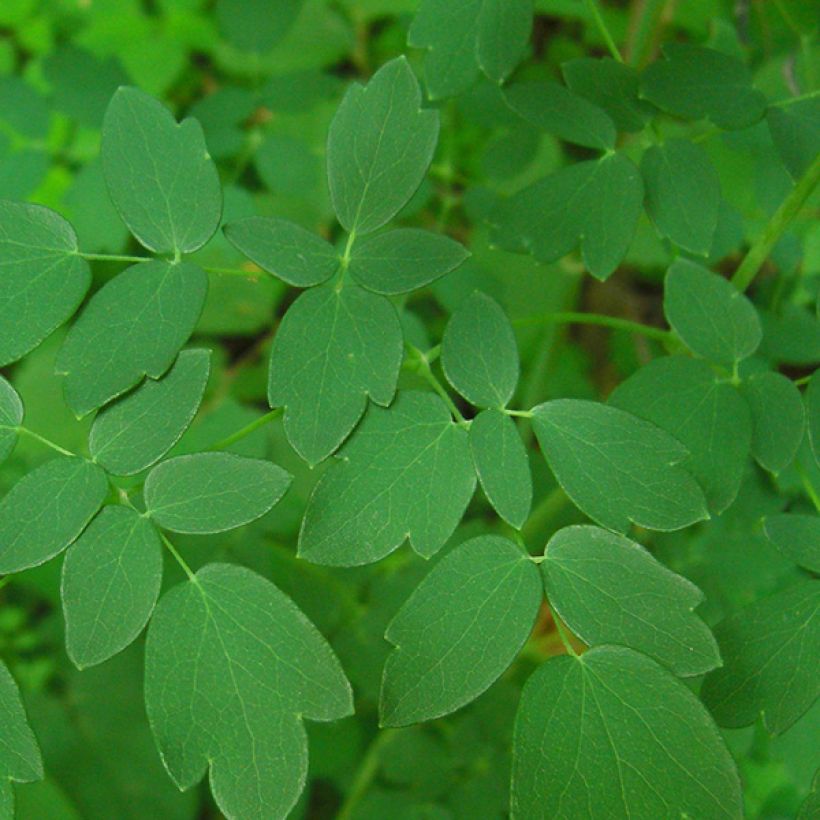

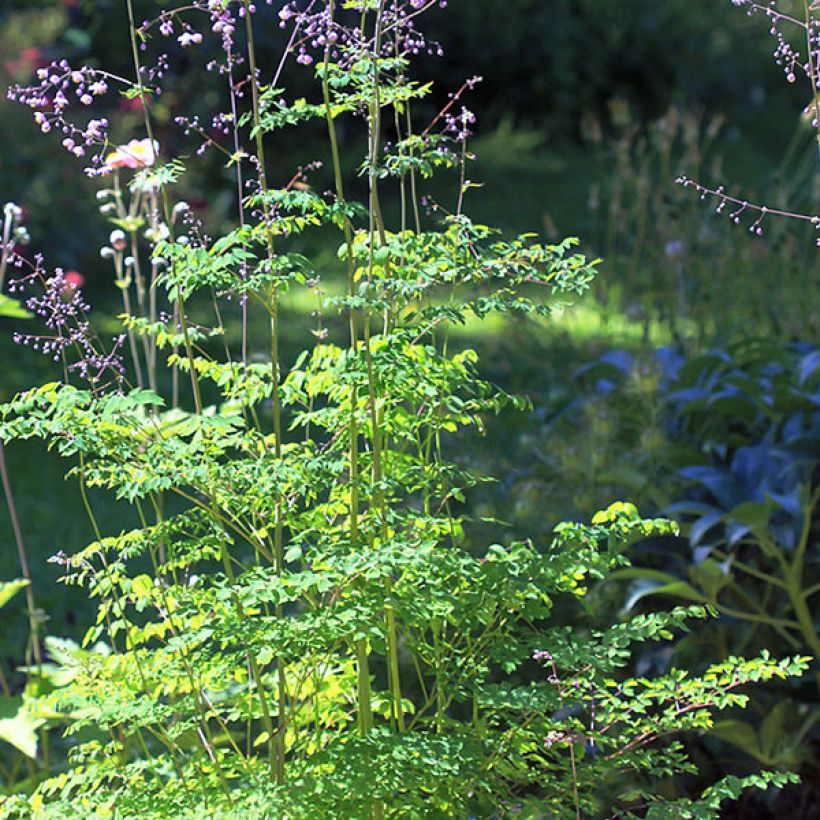

Flowering
Foliage
Plant habit
Botanical data
Thalictrum
delavayi
Ranunculaceae
Chinese Meadow Rue
China
Other Thalictrum - Meadow Rue
View all →Planting and care
Despite its delicate and fragile appearance, Thalictrum delavayi is very hardy and low-maintenance. It simply requires to be planted in partial shade or even full shade, in moist and well-drained soil rich in organic matter, with minimal limestone content. It can also be established in full sun as long as the soil remains moist and there is ambient humidity around the plant. Plant in spring or autumn. Ideally, plant it at the base of a north or east-facing wall. It is advisable to add compost to the soil every year to improve drainage in winter and facilitate root development. Regular watering is also necessary during dry and hot periods.
Regularly deadhead the flowers to prolong the flowering period. The plant loses its leaves in autumn and completely disappears in winter, only reappearing quite late in spring. Therefore, do not cut the plant back in autumn so you can find it again in spring! As it can grow quite large, staking may be necessary, especially if it is used as a standalone plant or in a windy location. To avoid this inconvenience, it is advisable to plant it among other plants and bushes that it can lean on for support.
Divide the clumps in March-April by cutting the clump into several pieces with a spade. However, the divisions take a long time to establish.
Although highly resistant to diseases, it may be susceptible to powdery mildew during dry spells, and slug attacks at the start of the growing season.
Planting period
Intended location
Care
Planting & care advice
-
, onOrder confirmed
Reply from on Promesse de fleurs
Similar products
Haven't found what you were looking for?
Hardiness is the lowest winter temperature a plant can endure without suffering serious damage or even dying. However, hardiness is affected by location (a sheltered area, such as a patio), protection (winter cover) and soil type (hardiness is improved by well-drained soil).

Photo Sharing Terms & Conditions
In order to encourage gardeners to interact and share their experiences, Promesse de fleurs offers various media enabling content to be uploaded onto its Site - in particular via the ‘Photo sharing’ module.
The User agrees to refrain from:
- Posting any content that is illegal, prejudicial, insulting, racist, inciteful to hatred, revisionist, contrary to public decency, that infringes on privacy or on the privacy rights of third parties, in particular the publicity rights of persons and goods, intellectual property rights, or the right to privacy.
- Submitting content on behalf of a third party;
- Impersonate the identity of a third party and/or publish any personal information about a third party;
In general, the User undertakes to refrain from any unethical behaviour.
All Content (in particular text, comments, files, images, photos, videos, creative works, etc.), which may be subject to property or intellectual property rights, image or other private rights, shall remain the property of the User, subject to the limited rights granted by the terms of the licence granted by Promesse de fleurs as stated below. Users are at liberty to publish or not to publish such Content on the Site, notably via the ‘Photo Sharing’ facility, and accept that this Content shall be made public and freely accessible, notably on the Internet.
Users further acknowledge, undertake to have ,and guarantee that they hold all necessary rights and permissions to publish such material on the Site, in particular with regard to the legislation in force pertaining to any privacy, property, intellectual property, image, or contractual rights, or rights of any other nature. By publishing such Content on the Site, Users acknowledge accepting full liability as publishers of the Content within the meaning of the law, and grant Promesse de fleurs, free of charge, an inclusive, worldwide licence for the said Content for the entire duration of its publication, including all reproduction, representation, up/downloading, displaying, performing, transmission, and storage rights.
Users also grant permission for their name to be linked to the Content and accept that this link may not always be made available.
By engaging in posting material, Users consent to their Content becoming automatically accessible on the Internet, in particular on other sites and/or blogs and/or web pages of the Promesse de fleurs site, including in particular social pages and the Promesse de fleurs catalogue.
Users may secure the removal of entrusted content free of charge by issuing a simple request via our contact form.
The flowering period indicated on our website applies to countries and regions located in USDA zone 8 (France, the United Kingdom, Ireland, the Netherlands, etc.)
It will vary according to where you live:
- In zones 9 to 10 (Italy, Spain, Greece, etc.), flowering will occur about 2 to 4 weeks earlier.
- In zones 6 to 7 (Germany, Poland, Slovenia, and lower mountainous regions), flowering will be delayed by 2 to 3 weeks.
- In zone 5 (Central Europe, Scandinavia), blooming will be delayed by 3 to 5 weeks.
In temperate climates, pruning of spring-flowering shrubs (forsythia, spireas, etc.) should be done just after flowering.
Pruning of summer-flowering shrubs (Indian Lilac, Perovskia, etc.) can be done in winter or spring.
In cold regions as well as with frost-sensitive plants, avoid pruning too early when severe frosts may still occur.
The planting period indicated on our website applies to countries and regions located in USDA zone 8 (France, United Kingdom, Ireland, Netherlands).
It will vary according to where you live:
- In Mediterranean zones (Marseille, Madrid, Milan, etc.), autumn and winter are the best planting periods.
- In continental zones (Strasbourg, Munich, Vienna, etc.), delay planting by 2 to 3 weeks in spring and bring it forward by 2 to 4 weeks in autumn.
- In mountainous regions (the Alps, Pyrenees, Carpathians, etc.), it is best to plant in late spring (May-June) or late summer (August-September).
The harvesting period indicated on our website applies to countries and regions in USDA zone 8 (France, England, Ireland, the Netherlands).
In colder areas (Scandinavia, Poland, Austria...) fruit and vegetable harvests are likely to be delayed by 3-4 weeks.
In warmer areas (Italy, Spain, Greece, etc.), harvesting will probably take place earlier, depending on weather conditions.
The sowing periods indicated on our website apply to countries and regions within USDA Zone 8 (France, UK, Ireland, Netherlands).
In colder areas (Scandinavia, Poland, Austria...), delay any outdoor sowing by 3-4 weeks, or sow under glass.
In warmer climes (Italy, Spain, Greece, etc.), bring outdoor sowing forward by a few weeks.






























